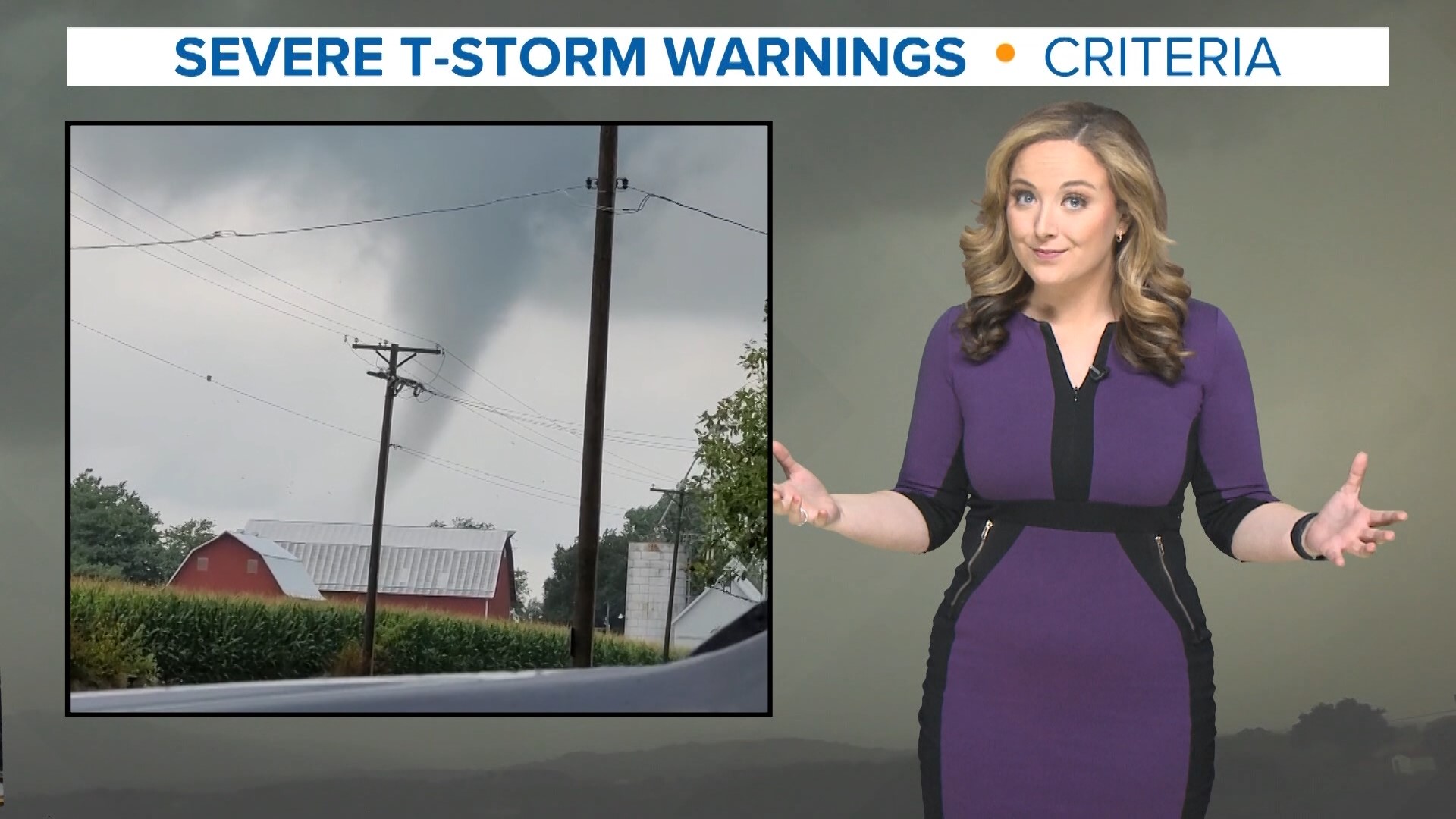CHARLOTTE, N.C. — An average between 50 and 60 days out of every year in the Carolinas will have thunderstorms – and when strong thunderstorms grow to a particular threshold, the National Weather Service will issue severe thunderstorm warnings for those severe weather treats.
Thunderstorms occur most frequently during spring and summer in Charlotte. That’s also when they’re more likely to be strong-to-severe. However, a storm can occur any time of the year.
What is a thunderstorm?
The thunderstorm definition is simple. It’s classified as rain during which you hear thunder and see lightning.
The energy from lightning heats the surrounding air to around 50,000 degrees Fahrenheit – which is about five times hotter than the surface of the sun.
The heat causes the air to expand outward causing that load clap we associated with thunder.
While lightning can be deadly, it is not a consideration for the National Weather Service when determining whether a thunderstorm receives a severe thunderstorm warning. Regardless of warning status, you should always head indoors whenever you hear thunder or see lightning.
What makes a storm severe?
First things first – only about 10% of thunderstorms are eventually classified as severe.
A thunderstorm is only considered severe when it has at least one of these:
Hail sized one inch or larger
Winds gusting in excess of 58 mph
Tornado
Severe hail
Hail measuring an inch is approximately the size of a quarter. Hail this size can travel anywhere from 10 to 25 mph. Hail can cause injury and damage, including denting your vehicle, cracking a windshield, and damaging your home.
Severe wind
Winds in excess of 58 mph can cause major structural damage. Loose outdoor items and tree branches can be blown around. Even trees and shrubs with weak root systems can be uplifted.
You may often hear these winds referred to as straight line winds. The damage can sometimes be mistaken for a tornado.
When the National Weather Service surveys storm damage after a potential tornado or significant wind damage, they will study the debris pattern to determine whether it was a tornado or straight line winds. If debris is scattered and thrown around, indicating winds moving multiple different ways, then it was likely a tornado. If all the debris is scattered in one direction, then it was likely straight line winds.
The most violent tornadoes can cause cars to become airborne, rip homes to shreds, and turn debris into a weapon.
How will I know if a storm is severe?
The National Weather Service will issue a severe thunderstorm warning based on the hail, wind, and tornado criteria.
Their warnings are broadcast over NOAA weather radio, on television, and through mobile apps, including the WCNC Charlotte app.
The most severe warnings will also be sent straight to your phone using the Wireless Emergency Alert system. Similar to the way an Amber Alert may appear on your phone, this system broadcasts to all mobile devices in a designated geographic area.
In 2021, the National Weather Service revamped its system to limit how often the Wireless Emergency Alert is used. The goal of this revamp was to reserve the system only for the most life-threatening of storms.
A thunderstorm must have hail at least 2.75" big, or the equivalent of a baseball-sized, or wind at least 80 mph, the equivalent of a Category 1 hurricane.
When to seek shelter from a storm
Do not wait to seek shelter from a storm.
To protect yourself against severe weather, seek shelter inside a sturdy structure during storms.
Lightning from a storm can strike even when it has not begun raining at your location. That is why, regardless of a storm's severe status, you should seek shelter inside away from any thunderstorm.

